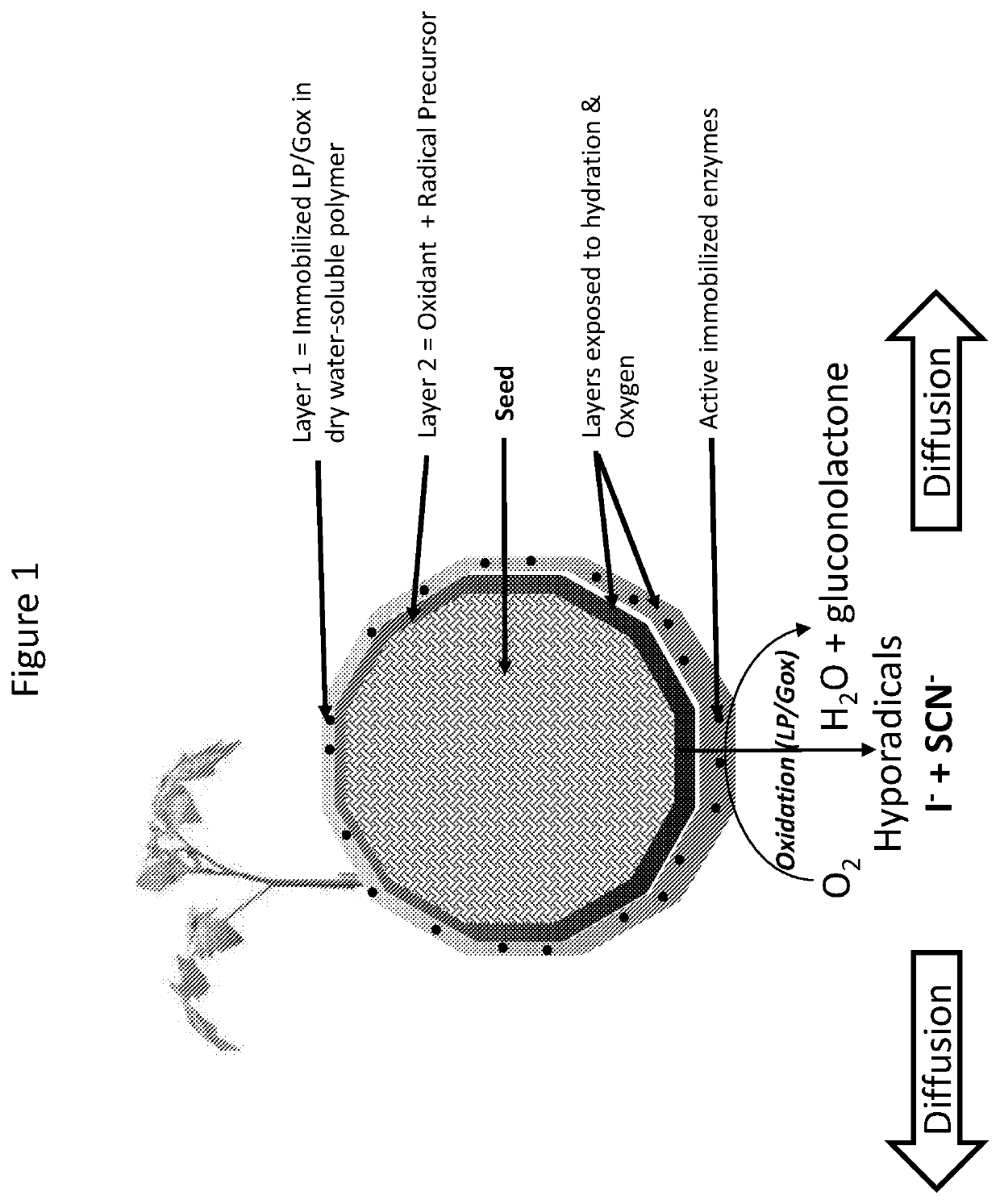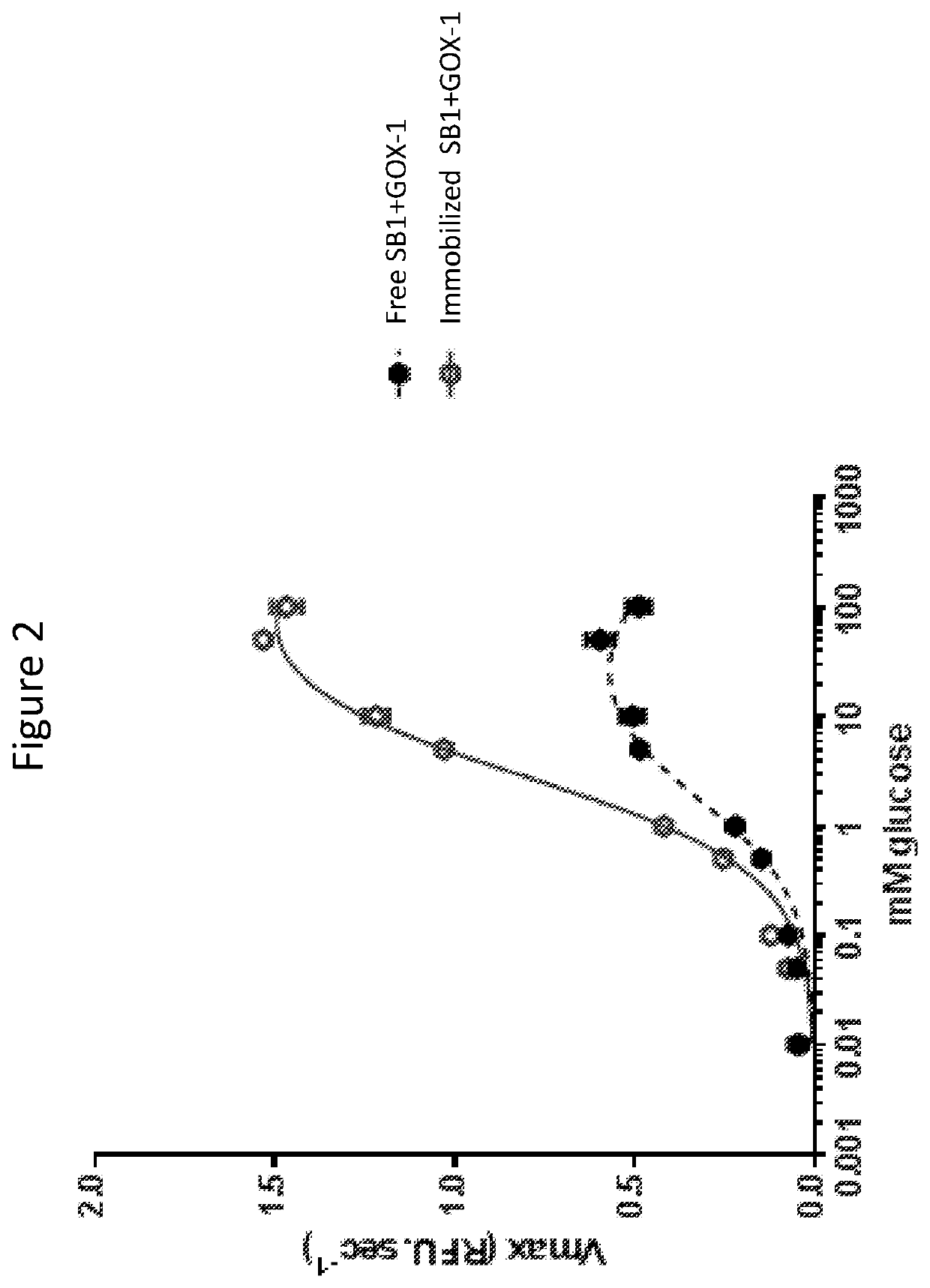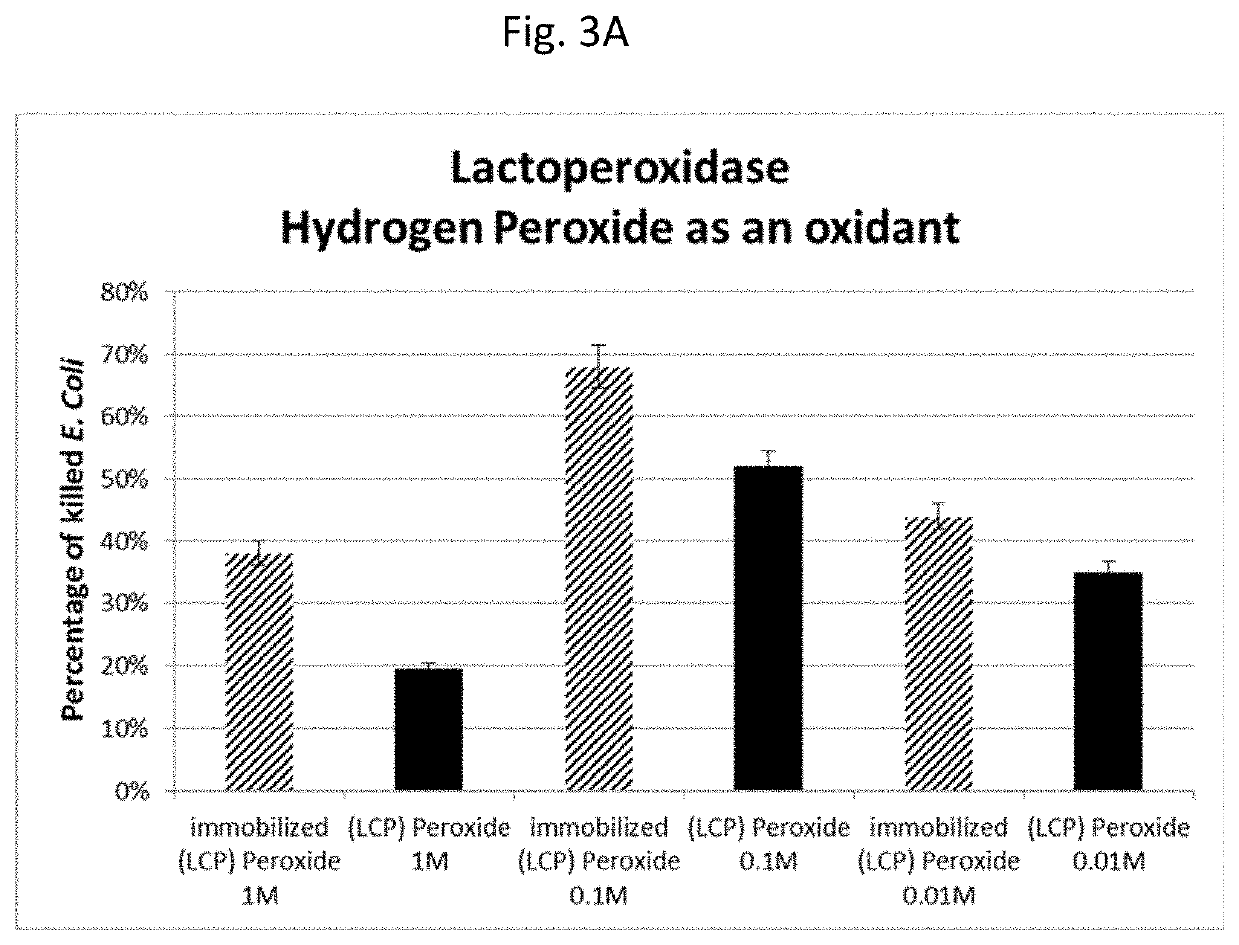Magnetically immobilized microbiocidal enzymes
a microbiocidal enzyme and magnetization technology, applied in the field of magnetization immobilization of microbiocidal enzymes, can solve the problems of significant human health threat, tens of billions of dollars in losses annually, and reduce the yield, quality and safety of agricultural and animal products worldwide, and achieve the effect of improving the yield of plant products
- Summary
- Abstract
- Description
- Claims
- Application Information
AI Technical Summary
Benefits of technology
Problems solved by technology
Method used
Image
Examples
example 1
Optimization of Magnetic Nanoparticle Immobilized HPP and FRP Enzymes
[0104]Soybean peroxidase-based (SBP), a free radical producing enzyme (FRP), was used as a catalyst in BNPs. The BNPs removed phenol from solution by converting it to polyphenol that was removed by filtration or centrifugation. The optimal conditions for SBP (i.e., BNP concentration and pH) was determined as follows:
[0105]A soybean peroxidase plus glucose oxidase (SBP / GOX) enzyme system was combined and co-immobilized in nanoparticles clusters. In order to eliminate the need for hydrogen peroxide in the substrate buffer, glucose oxidase (GOX), in the presence of oxygen and beta-D-glucose, can be used to provide hydrogen peroxide for a combined peroxidase catalyst. A modified high-throughput microplate-based assay was used to screen peroxidase catalyst (HRP, SBP or a combination thereof) with different amounts of GOX. 50 mM glucose was used for H2O2 generation. The total peroxidase concentration was kept at 60 nM fo...
example 2
Generation of Solid Antimicrobial LP / GOX Assemblies
[0112]The LP / GOX system, including FRP substrates, was compartmentalized in a solid antimicrobial assembly that stabilized the activity by preventing GOX from consuming glucose and producing H2O2 in the presence of oxygen. The compartmentalized reagents were formulated into a multilayered coating assembly (Level 2) so that the formula only activated when wet and the substrates were allowed to diffuse to the enzymes. LP / GOX is a nonspecific antimicrobial system that generates hyporadicals for microbiostatic and microbicidal activity. This can be applied in novel plant seed coatings as described herein that prevents loss of viable seeds due to the action of soil-borne plant pathogens.
[0113]Discs of 2 mm for each layer were made by drying out 20 μl of solutions of Layer 1 or Layer 2. The water activated discs were composed of immobilized enzyme, substrate, and a cellulosic matrix that holds them together. The first layer contained immo...
example 3
LP / GOX Seed Coating
[0116]Seeds are coated with the antimicrobial compositions disclosed herein in a sequential 2 layer system. The concentration of polymer may vary based on the thickness of the coating required. The concentration of the immobilized enzyme may vary based on the efficacy and duration of the antimicrobial activities desired.
[0117]The solid antimicrobial LP / GOX assembly was shown to be plant safe according to the following protocol: 1 mL of Yellow Glucose / substrate mix was combined with 500 μL Blue Enzyme / substrate mix. The same was done with 1 mL Yellow and 500 μL Blue Control. The mixtures were vortexed. Using forceps, 20 tomato seeds were each dipped into the Enzyme and Control mixtures and allowed to dry overnight. The seeds were then placed on damp filter paper at the bottom of an empty sterile culture plate marked in three sections: Coated Enzyme+, coated Enzyme−, Uncoated. After 7 days, the seeds were checked for germination.
[0118]The enzyme coatings did not inh...
PUM
| Property | Measurement | Unit |
|---|---|---|
| size | aaaaa | aaaaa |
| particle size distribution | aaaaa | aaaaa |
| size | aaaaa | aaaaa |
Abstract
Description
Claims
Application Information
 Login to View More
Login to View More - R&D
- Intellectual Property
- Life Sciences
- Materials
- Tech Scout
- Unparalleled Data Quality
- Higher Quality Content
- 60% Fewer Hallucinations
Browse by: Latest US Patents, China's latest patents, Technical Efficacy Thesaurus, Application Domain, Technology Topic, Popular Technical Reports.
© 2025 PatSnap. All rights reserved.Legal|Privacy policy|Modern Slavery Act Transparency Statement|Sitemap|About US| Contact US: help@patsnap.com



